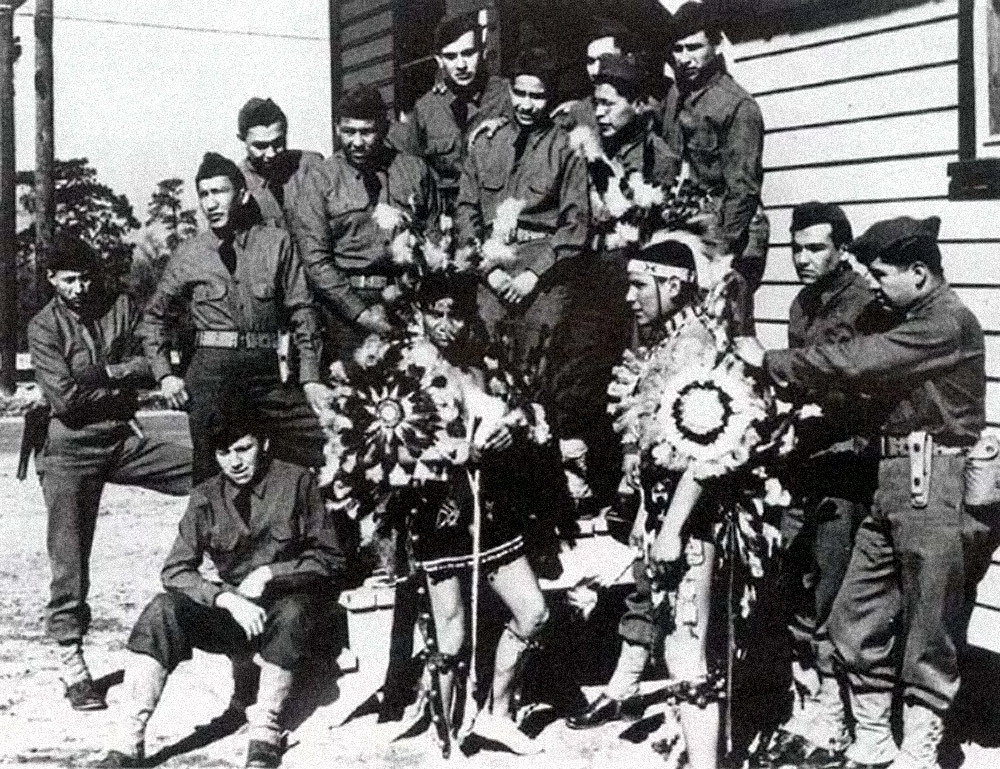Veterans Day was originally known as Armistice Day, and later became Veterans Day after World War II and the Korean War.
The idea was to pay tribute to all veterans who had served our country, and today we’ll pay tribute to 17 Native American veterans of the second World War: the Comanche Code Talkers.
Today the Navajo Code Talkers are fairly well known, and for good reason.
But there were actually quite many First Nations people who served in the U.S. military during the war.
They included 17 Native Comanche speakers, who developed a code in their language that could be used to send messages to and from military units.
They were assigned to the 4th Signal Company of the 4th Infantry Division at Fort Benning, Georgia.
The military says that before World War II, the countries that later made up the Axis Powers had sent what they called “scholars” to the U.S. to study Native American languages.
But they didn’t study Comanche.
And even if they had, they wouldn’t have been able to break the code that these talkers had developed.
Their commanding officer gave them a list of 250 words that would be sent regularly in coded messages but didn’t have equivalents in Comanche.
The code talkers created Comanche language versions of these terms.
They referred to bombers as “pregnant birds” and the bombs as “baby birds.”
The term for machine gun combined the words for “gun” and “sewing machine.”
The code for Hitler was “crazy white man.”
These were terms that only the Comanche Code Talkers knew; even other Comanche speakers wouldn’t have known what they meant.
And in fact, their codes were never broken during the war.
Not only that, these code talkers could often decode and relay messages in minutes, while military coding machines took hours to do the same work.
These Code Talkers had enlisted before the U.S. even entered World War II, but they didn’t see combat until D-Day in 1944.
Thirteen of them set up, maintained and repaired communications lines during the Normandy invasion.
In fact, the first message sent from Utah Beach was from a Comanche Code Talker.
Pfc. Larry Saupitty sent word that his unit had “made a good landing… we landed at the wrong place.”
The Army later noted that it was ironic that many of the Code Talkers had attended boarding schools that were set up to assimilate them, and yet their knowledge of Native languages wound up saving lives and helping the war effort in some huge ways.
Their work wasn’t declassified until long after World War II ended, so recognition of their service was slow in coming.
But it has come.
Today they are increasingly known the way they’re described by the Comanche National Museum and Cultural Center: “valiant soldiers” who “are credited with saving the lives of thousands of American and Allied service men.”
Comanche language helped win World War II (US Army)
Comanche Code Talkers (Comanche National Museum and Cultural Center)
124th Signal Battalion (ArmyHistory.org)
Photo by U.S. Army via Wikicommons

